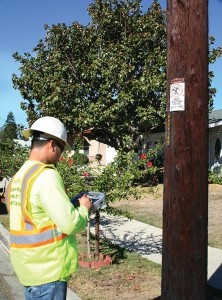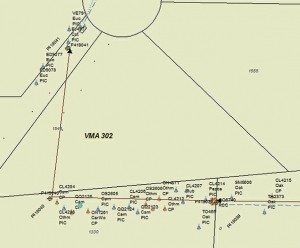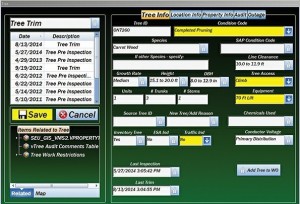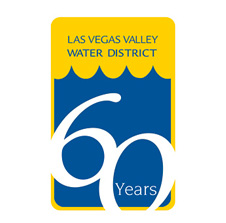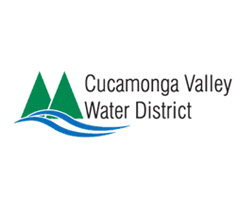San Diego Gas & Electric
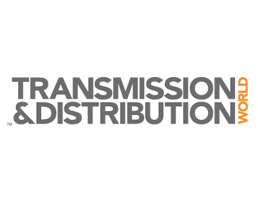
Trimming the Cost of Tree Trimming
San Diego Gas & Electric deploys a GIS-based mobile vegetation management system to minimize outages and maximize customer satisfaction.
The most common natural threat to overhead power lines simply will not stop growing: trees. Preventing vegetation from interfering with and damaging overhead lines is a huge and constant effort. With more than 450,000 trees that must be trimmed regularly and 30,000 poles in its pole-brushing program, San Diego Gas & Electric (SDG&E) knows this all too well. Managing tree growth is a big part of day-to-day operations. Over the years, the utility has made significant investments in its vegetation management (VM) system. In fact, SDG&E recently deployed a major upgrade to its VM system that addresses some of the common issues many utilities face:
- Centralizing storage of geospatial, work management and asset management data
- Implementing a sophisticated yet easy-to-use paperless, mobile solution
- Replacing a highly customized legacy VM solution with off-the-shelf software• Integrating seamlessly with other key systems, including SAP
- Streamlining all VM processes
SDG&E partnered with POWER Engineers to help lead the implementation of the system upgradeaswell as to develop software customizations, reports and system integrations.
Using GIS-centric Technology
One unique aspect of the new VM system, called PowerWorkz, is that it is designed to interact directly with SDG&E’s geographic information system (GIS), ArcGIS from Esri. The GIS provides a comprehensive inventory of the electric transmission and distribution network assets maintained in an Oracle database. The GIS-centric work and asset management system, Azteca’s Cityworks, is used to manage all VM work orders and service requests.
PowerWorkz allows VM work to be planned and executed within the context of an information-rich map, which includes access to GIS feature attributes, network connectivity data, polygonal area information and street/property/ownership data, along with high-resolution aerial imagery. All VM work is tracked in PowerWorkz by an individual tree or pole identification number and grouped within 133 geographic polygons, called vegetation management areas.
Going Mobile
One of the biggest challenges of the PowerWorkz system was the elimination of manually maintained paper records of the work done by field crews. With the legacy system, crews tracked their work by filling out forms called bubble sheets. Because SDG&E’s 200-plus field crew members make up the largest number of its PowerWorkz users, the utility wanted to capitalize on the latest mobile technology to allow them to ditch the paper and switch to using GPS-enabled tablets and laptops. A sophisticated yet easy-touse mechanism was implemented to automatically detect any mobile software updates as well as to download and upload work to and from the mobile device.
iWater’s infraMAP mobile software provided a platform that allowed SDG&E to control many aspects of the user experience for field crews. It was integrated out of the box with both the GIS and asset management software. Moving to a paperless, mobile solution required a significant amount of training and adjustment for field crews, but the change has resulted in significant benefits for all stakeholders as well as improved overall customer service.
Leaving a Legacy
Replacing highly tailored legacy tools can be difficult for several reasons:
- Legacy tools are often spread across many user groups within an organization, so coordination between separate teams can require extra time and effort.
- Custom tools typically have a streamlined workflow, and it can be difficult for generic off-the-shelf products to match, much less improve, the streamlined user experience without customization. Customization improves the user experience, but also takes time and money to implement and maintain.
- Data is usually difficult to migrate to newer systems because it is often spread across a variety of older,stand-alone systems not necessarily in sync. However, data migration usually is necessary because the legacy VM data is valuable and must be accessible for historical reporting.
- SDG&E tried to find the right balance between leveraging off-the-shelf software and augmenting it with custom tools. Following are some of the key customizations the utility developed for PowerWorkz:
- Launch Pad: This tool manages all data transfers between all mobile users and the Oracle database. Field crews download daily work orders, perform inspections and collect data on the field-based mapping application. This allows tree-trimming crews, including subcontractors, to perform their work and sync up work orders for reporting and statistical analysis. Launch Pad also ensures all software and configuration updates are applied consistently across all mobile devices. One of the key benefits of this tool is its extremely simple user experience.
- Audit tools: Auditing VM work is a critical part of the workflow. The audit tools allow audit foresters toprepare work orders efficiently for auditing tree-trimming activities. Auditors select assets based on specific criteria (for example, all of the trees in an area with a condition code indicating recent tree-trimming activity) and generate a random sample that is spread evenly across all contractors. Interaction with the GIS map is a key benefit of these tools.
- System integration: Using data in the system, an extract from SAP Financials allows the creation ofreports that confirm contractors’ invoiced amounts based on the completed VM activities in the system. This custom integration provides significant benefits to both SDG&E and the VM contractors by verifying contractor payments are made efficiently and accurately.
- Custom reporting: Given the GIS-centric nature of the system, multiuse reports are created throughspatial queries that fulfill regulatory requirements specific to different agencies and provide tracking, quality control and other summary information for both utility management and the VM contractors.
- Data migration: It was crucial that SDG&E’s 10-year history of inspection activity not be lost, so a customdata migration tool was created to migrate more than 9 million records into the PowerWorkz inspection tables from multiple legacy systems. The migration of the historical records resulted in more than 50,000 work orders and 56,000 projects for the PowerWorkz system.
Retooling Business Processes
Like most utilities, SDG&E’s VM program includes trimming trees and clearing brush around poles and transmission towers. As this program accounts for the largest recurring maintenance expenses, it was critical to ensure all existing VM business processes were evaluated to determine changes that could be made to take full advantage of the new technology. SDG&E modeled all existing VM processes and identified updates for these business processes through a series of workshops at the beginning of the project. The new PowerWorkz system covers these VM business processes:
- Tree trimming and pole brushing
- Inspections
- Audit sampling of completed work
- Work aggregation for invoicing
- Work completion and data collection
- Reporting
- Taking the time to create workflow diagrams also provided significant benefits. Inefficiencies in the prior paper-based system were eliminated, and the graphic nature of the diagrams made it easier to review options for new flows and to choose the best option going forward. The business process diagrams also assisted in the development and training aspects of the project.
Benefiting the Bottom Line
An effective VM solution like PowerWorkz can decrease the risk of system outages and other liabilities, increase customer convenience and satisfaction, and provide economic gains through the effective implementation of technology. PowerWorkz is an end-to-end solution that has significantly improved routine VM processes in the following ways:
- Combining all work from multiple systems into one GIS-centric system
- Using standard software along with customized functionality to improve the efficiency of the overall VMworkflows and replace several paper-based processes
- Providing the use of spatial queries for reporting from a central database that includes all asset and workmanagement data
- Allowing transmission inspections to be performed including GPS-enabled aerial data capture
- Integrating with financials for easier tracking and greater accountability with SDG&E’s contracted VMworkforce.
- At all levels, the PowerWorkz system has allowed SDG&E’s VM workforce to become a well-oiled machine.
Balancing Change
As with all large projects, several lessons were learned during the course of designing, building and implementing the PowerWorkz system:
Spend enough time early in the project to understand all the capabilities of the off-the-shelf softwarebeing considered and find the right balance between changing business processes and developing customizations.
- Involve all stakeholders, including contractors, as early as possible in the planning process and keepthem involved with checkpoint demonstrations throughout the course of the project to ensure goals and expectations are aligned.
- Do not underestimate the time and effort needed to address change management issues as users —both internal staff and contractors — transition to the new system. Changes to business processes, especially when they replace paper with new technology, require dedicated and consistent preparation.
SDG&E has managed this major system upgrade successfully and achieved multiple benefits for the utility, its VM contractors and customers.
The authors would like to acknowledge the entire PowerWorkz project team, including SDG&E’s information technology, vegetation management program and transmission construction maintenance department teams, as well as the POWER Engineers team.
Diane Rodgers (dlrodgers@semprautilities.com) is the vegetation management team lead for technical support and customer service at San Diego Gas & Electric. She has been leading this team for more than nine years and was the business project lead for the PowerWorkz project. Rodgers has bachelor’s degrees in both ornamental horticulture from California State University, Chico, California, U.S., and computer information systems from Regis University, Denver, Colorado, U.S.
Chris Erpelding (chris.erpelding@powereng.com) is the consulting department manager for POWER Engineers’ geospatial and asset management business unit and served as POWER’s project manager on the PowerWorkz project. He has a BS degree in business administration/information systems from San Diego State University, San Diego, California, U.S., and has 29 years of experience with enterprise-wide geospatial, asset management and IT projects.
Mentioned in this article:
Cityworks | www.cityworks.com
Esri | www.esri.com
iWater | www.iwater.org
POWER Engineers | www.powereng.com
San Diego Gas & Electric | www.sdge.com
Diane Rodgers, San Diego Gas & Electric, and Chris Erpelding, POWER Engineers




